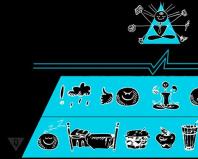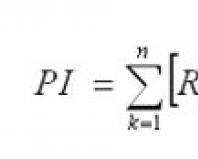Roofing uniflex TKP. Roofing material "Uniflex EPP": technical characteristics ("TechnoNikol"). Installation features, reviews. Technical properties of various modifications
Designed for waterproofing buildings, structures and building structures.
Structure:
Uniflex is produced by applying a bitumen-polymer binder consisting of bitumen, SBS (styrene-butadiene-styrene) polymer modifier and mineral filler(talc, dolomite, etc.). Coarse-grained, fine-grained sprinkles, foil and polymer film are used as a protective layer.
Specifications:
Storage
Rolls of material should be stored in a dry indoors V vertical position in one row in height at a distance of at least 1 m from heating devices.
Transportation
Transportation is carried out by all types of transport in covered vehicles in accordance with the Rules for the carriage of goods in force for this type of transport.
Packaging Details
The packaging of the pallet with rolls is a white shrink bag.
Brands:
Depending on the type of topping and area of application, Uniflex is available in two brands:
Uniflex K— with coarse-grained toppings front side and polymer film on the welded side of the web; used to install the top layer of waterproofing with sun protection;
Uniflex P— with a polymer film on both sides of the canvas; used for the installation of lower layers in multi-layer waterproofing of building structures.
EPP
Chamber of Commerce and Industry
HPP
ECP
TCH
HKP
Table of Material Characteristics:
| Parameter name | EPP | Chamber of Commerce and Industry | HPP | ECP | TCH | HKP | |
| Thickness (±0.1), mm | 2,8 | 2,8 | 2,8 | 3,8 | 3,8 | 3,8 | |
| Weight 1 m2, kg, (±0.25 kg) | 3,74 | 3,85 | 3,8 | 4,92 | 5,0 | 4,97 | |
| Breaking force in longitudinal/transverse direction, N, not less | polyester | 500/350 | - | - | 500/350 | - | - |
| fiberglass | - | 800/900 | - | - | 800/900 | - | |
| fiberglass | - | - | 300/– | - | - | 300/– | |
| Flexibility temperature on timber R=25mm, оС, not higher | -20 | -20 | -20 | -20 | -20 | -20 | |
| Heat resistance, °C, not less | 95 | 95 | 95 | 95 | 95 | 95 | |
| Type protective coating | upper side | film without logo | film without logo | film without logo | granulate, slate | granulate, slate | granulate, slate |
| welded side | film with logo | film with logo | film with logo | film with logo | film with logo | film with logo | |
| Length/width, m | 10x1 | 10x1 | 10x1 | 10x1 | 10x1 | 10x1 | |
| Weight of binder on the welded side, kg/sq.m., not less | 2,0 | 2,0 | 2,0 | 2,0 | 2,0 | 2,0 | |
| Water absorption for 24 hours, % by weight, no more | 1 | 1 | 1 | 1 | 1 | 1 | |
| Loss of powder, g/sample, no more | 1 | 1 | 1 | ||||
| Waterproof at a pressure of at least 0.2 MPa, for 2 hours | absolute | absolute | absolute | ||||
| Waterproof for 72 hours at a pressure of at least 0.001 MPa | absolute | absolute | absolute |
Manufacturing jobs:
According to the Guidelines for the design and installation of roofs from bitumen-polymer materials roofing company"TechnoNIKOL" can be used in all climatic regions according to SNiP 23–01.
TechnoNikol Corporation produces roofing roll materials, waterproofing mastics, materials for sound insulation and.
Next in line is TechnoNIKOL Uniflex EKP material, specifications TKP, EPP, TPP, as its modifications, will also be discussed in the article.
Uniflex is perhaps the most famous modern roofing system, as well as waterproofing material, produced by TechnoNIKOL. Its base is a polyester or fiberglass fabric, which is usually coated on both sides with a layer of polymer bitumen binder, which consists of chemical substance styrene-butadiene-styrene (so-called SBS), dolomite (talc) as a mineral filler + polymer modifier. Upper protective layer- This is a sprinkle of various grains or a film (sometimes foil).
To avoid confusion, you need to immediately understand the product labeling. What does the abbreviation Uniflex EPP, TPP, EKP or TKP mean? And do the technical characteristics of these brands differ?
The average developer needs to know the following.
- The middle letter “P” in the name means that the panel is covered with a polymer film on both sides. Consequently, this brand of Uniflex (EPP, TPP) is used primarily as the bottom working layer in the construction of multi-layer waterproofing.
- The letter “K” indicates that the canvas on the front (outer) side has a coarse-grained coating, on the other side, the welded side, there is only a polymer film. It is clear that this brand products (EKP, TKP) can be used for installation of the top layer of the roof (with the function of protection from sun rays and general waterproofing).
Table values of technical characteristics of the Uniflex material (EKP, TKP, EPP, TPP)
The table shows that this building material has excellent waterproofing qualities and characteristics, which allows it to be widely used in the construction of a wide variety of building structures.
It perfectly insulates not only roofs, but also basements, etc.
Uniflex TechnoNIKOL is modified with polymers, and therefore has technically increased bio- and heat resistance, as well as flexibility (even at negative temperatures).
Products are usually produced in rolls with an area of 10 m2. Today's price is approximately 133 rubles/m2.
Are there any restrictions on use? Eat.
Uniflex is a high-quality bitumen-polymer waterproofing material from TechnoNikol. All brands of uniflex have good technical characteristics and are used in the most critical areas of work.
Uniflex is available in two types:
- Uniflex P - material for the bottom layer roofing carpet and waterproofing works for various purposes(protection of the bottom and top surfaces of the roll - polyethylene film)
For example:
E, X and T- designation of the base on which the material is made - E-polyester, X-fiberglass, T-fiberglass;
P- designation of the upper protective layer of the roll - polyethylene film;
P- designation of the bottom protective layer of the roll - polyethylene film;
C The number indicates the weight of one m2 of material (the larger the number, the thicker and heavier the material).
How to choose a Uniflex brand
When choosing a brand you need to consider:
- for what types of work the material is needed (roofing or waterproofing work);
- what price category (the most inexpensive brands are made on a fiberglass base, and the more expensive ones are made on a fiberglass or polyester base);
- what service life (polyester-based material has the longest service life).
Uniflexes based on fiberglass are used for waterproofing work and roofing works on non-load-bearing roofs with a low slope, which during operation do not experience large tensile and tensile loads.
Materials based on fiberglass have better tensile properties, and those based on polyester have better tensile properties, therefore they are used in more critical areas of roofing and waterproofing.
Uniflex installation
- For high-quality styling Uniflex requires careful preparation of the surface. To do this, the roof base is leveled, cracks and dents are sealed, and cleaned of dust and debris.
- Next, the surface is treated with a bitumen primer, which removes dust and degreases the surface, improves the adhesion of Uniflex to the roof base or waterproofed surface. Primer consumption according to manufacturers' recommendations is 300 ml/m2.
- To reduce material consumption, you must first try it on. To do this, the material is rolled out on the surface, cut where necessary using a roofing knife, and rolled back into a roll.
- Next, Uniflex is heated evenly and gradually gas burner to prevent it from overheating. At the same time, the base also heats up. After this, the material is carefully laid and pressed tightly. Laying of Uniflex is carried out with an overlap, which should be at least 10 cm. Upon completion of laying each of the layers of Uniflex (bottom and top layer), it is necessary to check the joining seams. In case of insufficient tightness, the seams need to be additionally heated or lubricated with a special bitumen mastic and press to the base. To keep the roof airtight long years, trust its installation to certified specialists.
Uniflex production
Uniflex is produced by double-sided application of a bitumen-polymer binder consisting of bitumen, SBS (styrene-butadiene-styrene) polymer modifier and mineral filler (talc, dolomite, etc.) onto a base made of fiberglass, fiberglass or polyester. Coarse-grained, fine-grained powder and polymer film are used as a protective layer.
Where to buy Uniflex
- at our warehouse complexes in Moscow;
- order delivery to the site from our warehouse or from the manufacturer;
- order a prefabricated machine with various brands of uniflex, mastic, primer, and other products from our catalog;
- order a wholesale supply from the manufacturer.
Get qualified consultation You can choose the Uniflex brand and its price from our managers. In our warehouses you can buy Construction Materials necessary for the entire cycle of construction and finishing of your home. Our specialists will help you place an order and organize delivery of materials to your site.
BUY IN ONE PLACE, SAVE ON DELIVERY, TAKE USE OF REGULAR CUSTOMER DISCOUNTS
Uniflex is multifunctional and versatile with a wide range of applications. A bitumen-polymer binder with a special filler and thermoplastic elastomer is applied to a polyester or fiberglass base. For additional protection Sprinkles, film and foil are used.
Uniflex is a business-class material that combines practicality and favorable cost. When choosing, you need to clearly understand the objectives, and then the result will fully recoup all investments. It is also important to follow the installation rules. Almost complete analogue Roofing material Uniflex is . The finished coating will be of high quality and durable, and at the same time will not require complex maintenance and will not cause other troubles.
Uniflex: technical specifications
Features of installation and use of Uniflex
Depending on the type, Uniflex is used for waterproofing structures and roofing. According to manufacturing technology, several types are distinguished for creating the upper and lower layers (K and P, respectively). Installation is carried out on pre-treated horizontal or vertical surfaces using a propane torch.
Uniflex is quite universal, so it is suitable for different climatic regions. This the simplest way solve the problem of protecting structures when implementing the most complex construction projects. Additionally, the material is suitable for the restoration and restoration of old coatings, including roofing felt roofs. Usage advanced technologies guarantees impeccable quality and long service life.
Modifications of the Uniflex material:
- - base is fiberglass, top layer is slate, bottom layer is film
- - fiberglass base, top layer film, bottom layer film
- - base is fiberglass, top layer is slate, bottom layer is film
- - fiberglass base, top layer film, bottom layer film
Uniflex protective roofing coating is designed to form a waterproofing layer. It is produced by the TechnoNIKOL production company and is currently one of optimal options for arranging the roof.
General properties
StructureThis protective material performs the functions of . However, unlike it, in Uniflex the base is made not from cardboard, but from more durable materials. To do this, use fiberglass, similar in properties to fiberglass or polyester film. Then external and inner surface processed with a bitumen-polymer composition.
To improve performance, the manufacturer uses modern materials that provide reliable protection from moisture penetration. Along with this, there are several types of waterproofing, differing in external coating, specific gravity and area of application.
But regardless of the type of Uniflex, the following features can be distinguished:
- Wide range of external temperatures at which waterproofing layer does not lose its properties. It depends on the type of base - more flexible ones are well tolerated low temperatures(up to -40°C), dense ones are characterized by minimal thermal expansion even when the surface is heated to +150°C.
- If installation recommendations are followed, the service life of Uniflex can be up to 25 years.
- Reduced vapor permeability.
But for the right choice the desired model You should carefully read the technical characteristics of the protective coating:
 Specifications
Specifications In addition to its waterproofing function, this material can be used as a basis for forming a roofing carpet. This is especially true during installation soft tiles.
Types of Uniflex
 Kinds roofing coverings TechnoNIKOL
Kinds roofing coverings TechnoNIKOL The performance qualities and scope of application of a particular type of Uniflex depend on the components used in production. The main indicators are the type of substrate used and characteristics outer covering. This applies to all roofing materials from TechnoNIKOL.
The defining difference is the structure of the outer surface. Depending on this, you can determine the possibility of using Uniflex as a main or auxiliary coating.
This characteristic is indicated by letter marking:
- K. During the manufacturing process, a bedding of fine-grained shale is applied to the top surface. It forms a reliable mechanical protection, and also contributes to the absence of the sliding effect when installing the main coating. Used in upper layers roofing pie.
- P. The canvas is protected on both sides by a polymer film, less often by a small fraction bedding. In addition, it differs from Uniflex-P in thickness - it is 1 mm smaller. Area of application - the base of the pie or the formation of the main waterproofing layer.
In addition to this parameter, you need to know the decryption letter designations each type of Uniflex.
EPP
To make this roll material polyester is used, on which it is applied bitumen coating. Protective polymer film located on both sides. The company logo is printed on the inside. Area of application: bottom layer of the cake.
ECP
It differs from the model described above in the presence of an outer layer of shale chips. Thanks to this, it can be used as a top covering before installing soft tiles or other materials. General property– does not change its qualities when exposed to negative temperatures.
TCH
Frame fiberglass, used as the basis for this type of Uniflex, practically does not expand at high external temperatures. The external granular coating allows the material to be used as the main one when arranging the roof.
HPP
To reduce the cost of this type of Uniflex, the company used economical fiberglass. Its properties are similar to the TKP model, but it has a double-sided polymer coating. Since its thickness is only 3 mm, CPP needs to be used only for the bottom layer.
Chamber of Commerce and Industry
Its properties are almost completely similar to CPP, except for the thickness - it is slightly larger. Therefore, this type can be installed on a roof with a possible high load on the lower layer.
EVP
Designed to create a vapor-permeable layer. In his internal structure There are special micro channels through which excess steam is removed from the roofing pie.




